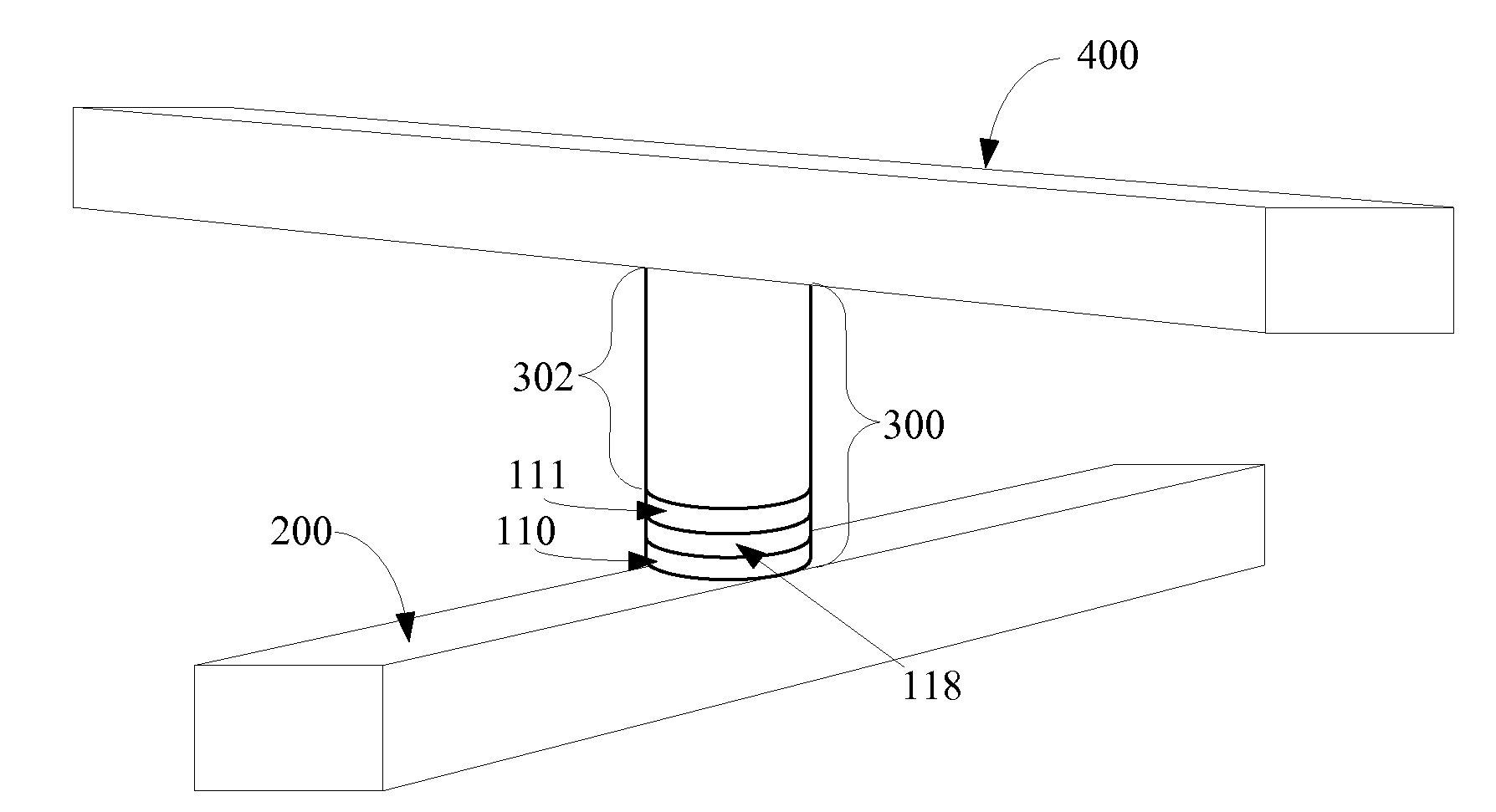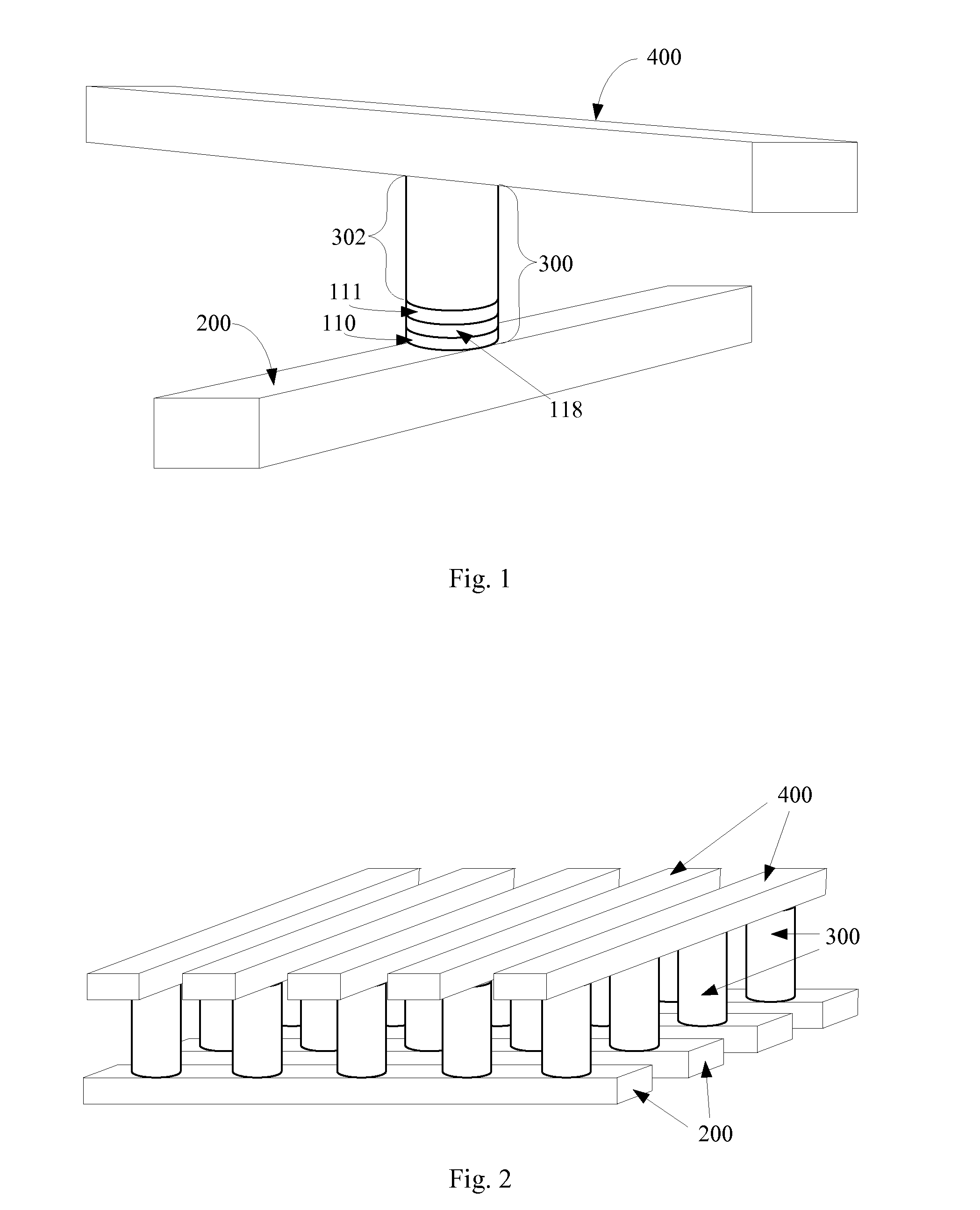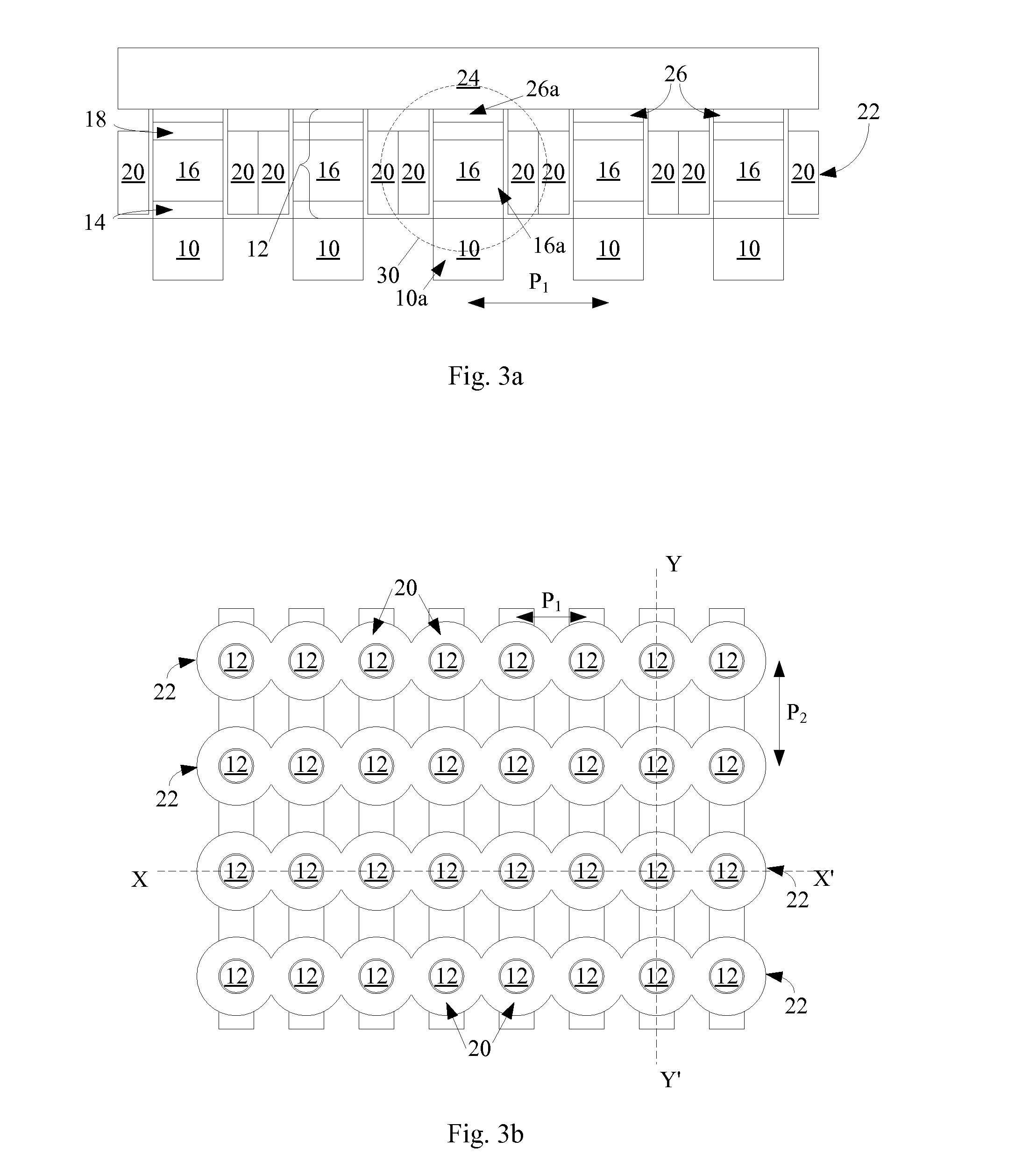Method to form a memory cell comprising a carbon nanotube fabric element and a steering element
a technology of carbon nanotube fabric and steering element, which is applied in the direction of digital storage, instruments, semiconductor devices, etc., can solve the problem and achieve the effect of reducing the difficulty of forming and maintaining such an empty spa
- Summary
- Abstract
- Description
- Claims
- Application Information
AI Technical Summary
Benefits of technology
Problems solved by technology
Method used
Image
Examples
example
[0036]Turning to FIG. 5a, formation of the memory begins with a substrate 100. This substrate 100 can be any semiconducting substrate known in the art, such as monocrystalline silicon, IV-IV compounds like silicon-germanium or silicon-germanium-carbon, III-V compounds, II-VII compounds, epitaxial layers over such substrates, or any other semiconducting material. The substrate may include integrated circuits fabricated therein.
[0037]An insulating layer 102 is formed over substrate 100. The insulating layer 102 can be silicon oxide, silicon nitride, Si—C—O—H film, or any other suitable insulating material.
[0038]The first conductors 200 are formed over the substrate 100 and insulator 102. An adhesion layer 104 may be included between the insulating layer 102 and the conducting layer 106 to help conducting layer 106 adhere to insulating layer 102. If the overlying conducting layer 106 is tungsten, titanium nitride is preferred as adhesion layer 104. Conducting layer 106 can comprise any...
PUM
 Login to View More
Login to View More Abstract
Description
Claims
Application Information
 Login to View More
Login to View More - R&D
- Intellectual Property
- Life Sciences
- Materials
- Tech Scout
- Unparalleled Data Quality
- Higher Quality Content
- 60% Fewer Hallucinations
Browse by: Latest US Patents, China's latest patents, Technical Efficacy Thesaurus, Application Domain, Technology Topic, Popular Technical Reports.
© 2025 PatSnap. All rights reserved.Legal|Privacy policy|Modern Slavery Act Transparency Statement|Sitemap|About US| Contact US: help@patsnap.com



